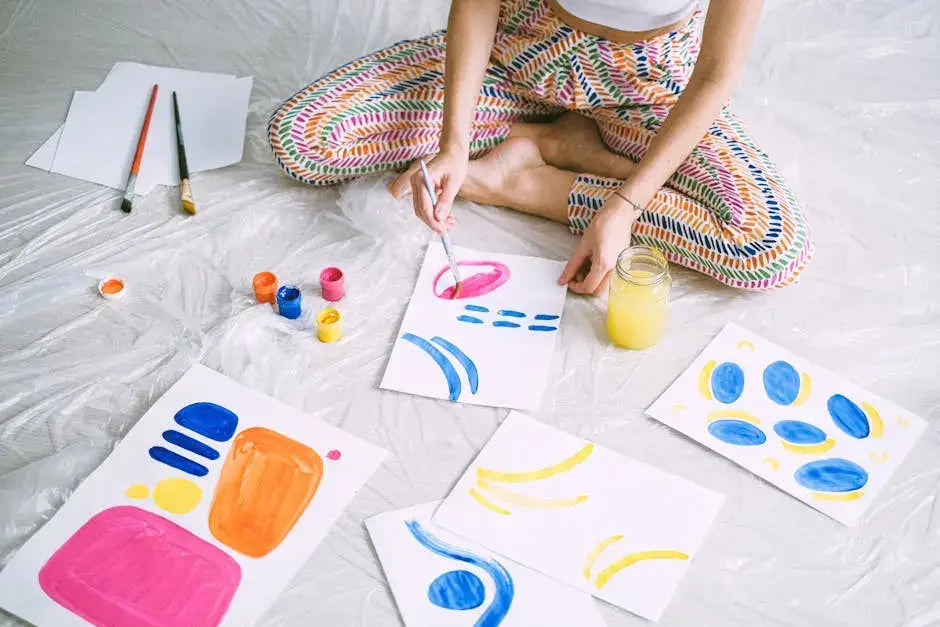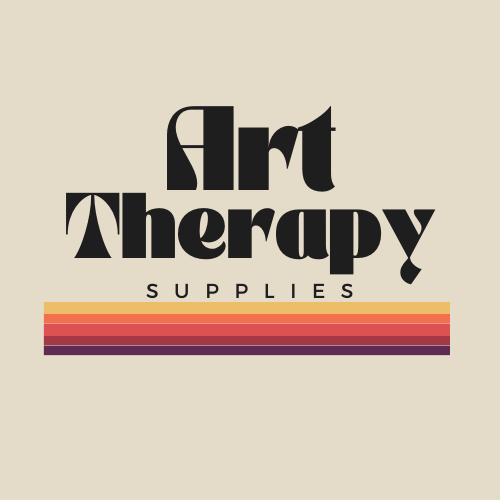Art therapy is a powerful and accessible tool for self-discovery, emotional healing, and personal growth. By engaging with colors, individuals can express complex feelings that may be difficult to articulate verbally, facilitating a deeper understanding of their inner emotional landscape. Colors serve as a non-verbal language, allowing for a nuanced exploration of emotions and experiences. In this blog, we will explore how different art therapy colors can evoke specific emotional responses, rooted in the principles of color psychology, and how to intentionally incorporate them into practice to unlock emotions and foster healing.

The Psychology of Color in Art Therapy
Colors influence our perceptions, moods, and subconscious emotional states. Understanding the psychology behind each hue allows therapists and individuals to select colors intentionally, creating a more meaningful and effective art therapy experience. For instance, bright yellow often energizes and uplifts, symbolizing optimism and hope, while darker shades like navy or black may evoke introspection or melancholy. Recognizing these associations helps individuals access and express emotions that might otherwise remain suppressed or unacknowledged.
When engaging with art therapy colors, individuals may unconsciously tap into feelings they haven't fully processed, facilitating catharsis and emotional release. This process underscores the importance of understanding color psychology, as it empowers participants to make informed choices about their artistic expressions. For example, using calming greens can foster a sense of balance and renewal, creating a safe space for emotional exploration and healing. By deliberately selecting colors aligned with their emotional needs, individuals can deepen their self-awareness and accelerate their journey toward inner peace.
This mindful use of colors enhances the therapeutic process by promoting emotional clarity and self-understanding. As people become more attuned to how specific hues impact their feelings, they can tailor their art practices to support ongoing emotional regulation and insight. Ultimately, the psychology of color in art therapy helps unlock hidden emotions, making it a vital foundation for meaningful self-expression and healing.
Key Colors and Their Emotional Associations
From the warmth and passion of reds to the serenity of blues, each color carries distinct emotional connotations that can be harnessed in art therapy to facilitate emotional processing. Understanding these associations allows individuals to create visual narratives that mirror their internal states and promote catharsis.
Red is a dynamic color linked with passion, courage, and intense emotions such as anger or love. When used intentionally in art therapy, red can serve as a catalyst for confronting and expressing powerful feelings that may be difficult to articulate otherwise. Its vibrancy can stimulate energy and motivation, encouraging individuals to face emotional challenges head-on.
Blue, on the other hand, often signifies tranquility, trust, and introspection. Engaging with shades of blue can evoke feelings of calmness and help process complex or overwhelming emotions. It creates a peaceful environment conducive to reflection and emotional release, making it especially beneficial for those experiencing anxiety or grief.
Yellow embodies happiness, optimism, and creative inspiration. Incorporating yellow into artwork can uplift mood and foster a sense of hope, making it a valuable color for overcoming despair or nurturing positivity during healing. Conversely, purple, associated with spirituality and introspection, can guide individuals toward deeper self-awareness and facilitate exploration of their inner worlds.
Green symbolizes growth, renewal, and harmony. Its presence in art therapy can promote feelings of balance and stability, especially during times of emotional turbulence. By engaging with these key colors, individuals can express their feelings more vividly and develop a clearer understanding of their emotional states, leading to more effective healing outcomes.
Techniques for Using Color in Art Therapy
Effective use of color in art therapy involves techniques such as color mixing, layering, and selecting palettes that resonate with specific emotional themes. These methods enhance creative expression and deepen emotional insight, allowing individuals to explore their feelings more fully.
Color mixing can serve as a metaphor for emotional blending and transformation. Participants can experiment with combining hues to create new shades that better represent their nuanced feelings, fostering a sense of agency and self-awareness. Layering colors adds depth and complexity to artwork, reflecting the multifaceted nature of human emotions. This technique encourages individuals to explore conflicting feelings simultaneously, promoting acceptance and integration of diverse emotional experiences.
Choosing intentional color palettes is crucial for aligning artistic expression with emotional goals. For instance, warm palettes of reds, oranges, and yellows may facilitate feelings of passion or motivation, while cooler palettes of blues and purples support calmness and introspection. By consciously selecting colors that mirror their current emotional states or desired outcomes, individuals can guide their healing process more effectively.
Exploring different mediums also broadens the expressive potential of art therapy colors. Watercolors, with their fluidity and soft edges, evoke gentle, nostalgic feelings and promote relaxation, whereas acrylics offer bold, vibrant strokes that can symbolize assertiveness or emotional intensity. Experimenting with various mediums helps individuals discover how different textures and finishes influence their emotional expression and perception.
Case Studies: Transformative Art Therapy Sessions
Real-life examples illustrate how art therapy colors can unlock emotions and catalyze healing. These stories demonstrate the profound impact of intentional color choices in facilitating emotional breakthroughs and personal growth.
Maria, who struggled with anxiety, found solace in soft blues and whites during her sessions. These calming hues allowed her to express feelings of overwhelm in a gentle, non-threatening way. As she painted with these colors, her anxiety gradually diminished, revealing deeper emotions beneath the surface. The soothing palette became a safe space for her to confront and articulate her fears, ultimately leading to a sense of clarity and inner peace.
John’s journey involved using reds and deep purples to explore suppressed passions and frustrations. Initially, his abstract compositions featured muddied, chaotic colors, reflecting confusion and emotional turmoil. Over time, as he embraced brighter reds and purples, he uncovered feelings of intensity and desire that he had previously avoided. This vibrant exploration helped him confront and integrate powerful emotions, fostering a sense of empowerment and self-understanding. These case studies highlight how specific art therapy colors can serve as gateways to emotional insight and healing, demonstrating the transformative potential of color psychology in practice.
Creating Your Own Art Therapy Color Palette
Designing a personalized color palette tailored to your emotional needs can be a transformative process. It encourages self-reflection and helps develop a more intentional, mindful approach to art therapy. Begin by tuning into your current emotional state and identifying colors that resonate or evoke particular feelings. This exercise transforms color selection from a purely aesthetic choice into a meaningful act of self-expression rooted in emotional awareness.
Experiment with mixing and combining colors to discover new shades that represent complex feelings. This process reflects the fluidity of emotions and allows you to explore their nuances visually. As you create, pay attention to how different colors influence your mood and thoughts, fostering a deeper connection between your inner world and artistic expression.
Consider how you will apply your palette in your chosen medium—whether painting, drawing, collage, or mixed media. Let your color choices guide your creative process, encouraging spontaneity and discovery. You may find that certain colors trigger unexpected emotional responses, providing insights into your subconscious or unresolved feelings.
Revisit and revise your palette regularly, as emotions are dynamic and evolve over time. This ongoing process ensures your art therapy practice remains relevant and supportive of your current emotional landscape. Embracing the fluid nature of your feelings through adaptable color choices enhances your capacity for self-awareness and healing, making your artistic journey a continuous voyage of discovery.
Embracing the Power of Colors in Art Therapy
Harnessing the emotional impact of art therapy colors through conscious selection and intentional use can significantly elevate the healing process. By understanding and applying principles of color psychology, individuals can navigate their feelings more effectively, unlocking emotions that may have been difficult to access through words alone. Embracing a spectrum of colors not only enriches artistic expression but also deepens self-awareness, fostering resilience and inner growth. Ultimately, integrating the power of colors into art therapy creates a meaningful, transformative experience that promotes emotional well-being and personal empowerment.

